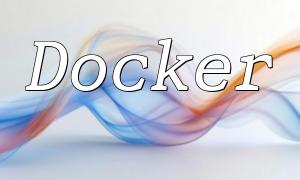With the rapid development of the internet, online learning has become the preferred method for acquiring knowledge. To meet the growing demand for diverse learning resources, creating a comprehensive and efficient online learning resource sharing platform is becoming increasingly important. This article will detail how to develop such a platform using PHP.
A successful online learning resource sharing platform must include the following essential features:
User Management: This includes user registration, login, and personal information modification. Users need to create an account to upload and manage resources.
Resource Upload: Registered users can upload various learning resources such as documents, videos, and audio. Uploaded resources need to be reviewed and approved by administrators before they are made public.
Resource Search and Browsing: Users can search for learning resources using keywords, and they can browse resources by categories.
Resource Evaluation and Recommendations: Users can rate and comment on resources they have used, and they can like or reply to other users' comments. The platform uses these ratings and a recommendation algorithm to suggest relevant resources to users.
Online Learning Feature: The platform provides support for online learning, such as document reading and video watching.
Data Analytics: Admins have access to a backend to manage user data and analyze resource statistics, ensuring smooth platform operations.
To implement these features, the following system architecture is designed:
Application Layer: Handles user requests and implements features like registration, login, resource upload, search, and browsing. It is developed using PHP.
Data Layer: Responsible for storing and managing user and resource information, using a database for data storage.
Business Logic Layer: Implements functions such as resource review, evaluation, and recommendation, built using PHP.
Presentation Layer: Provides an interface for user interaction, implemented with HTML, CSS, and JavaScript technologies.
Integration Layer: Integrates all layers to ensure the platform operates smoothly.
1. Preparation: Set up the web server environment (Apache or Nginx) and install the PHP development environment.
2. Database Design: Design the user and resource tables, establishing the necessary relationships.
3. User Management Module: Implement user registration and login features, ensuring proper validation and storage of user data.
4. Resource Upload Feature: Develop the resource upload module, allowing users to upload various learning materials and provide relevant information. Uploaded resources will be reviewed by administrators before going live.
5. Resource Search and Browsing Module: Implement keyword search and category-based browsing to enhance user experience.
6. Resource Evaluation and Recommendation Feature: Allow users to rate and comment on resources they've used, and to like or reply to others' comments. The platform recommends related resources based on user ratings and feedback.
7. Online Learning Feature: Provide online learning functionalities, including document viewing and video watching, to enhance the learning experience.
8. Data Analytics Module: Provide admin users with tools to manage and analyze platform user data and resource statistics.
This article describes how to use PHP to build a comprehensive online learning resource sharing platform. By implementing features like user management, resource upload, search and browsing, evaluation and recommendations, online learning, and data analytics, we can create an efficient and feature-rich platform for users. We hope this article provides valuable guidance to PHP developers working on similar platform development projects.









